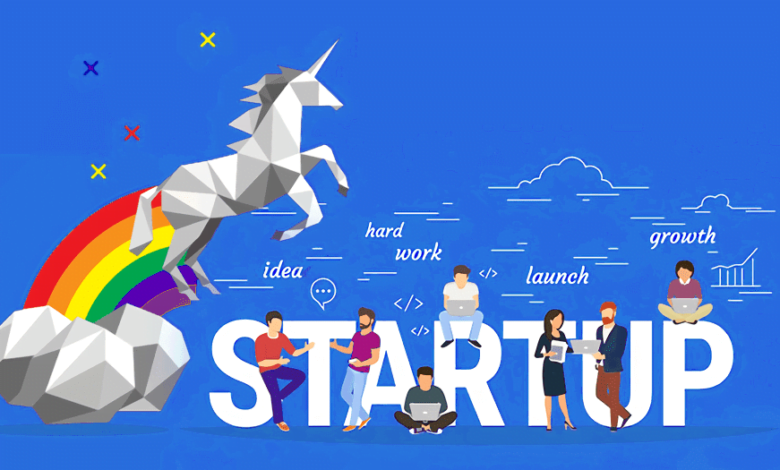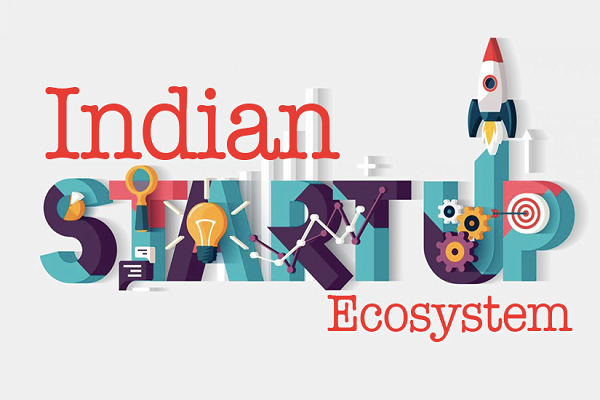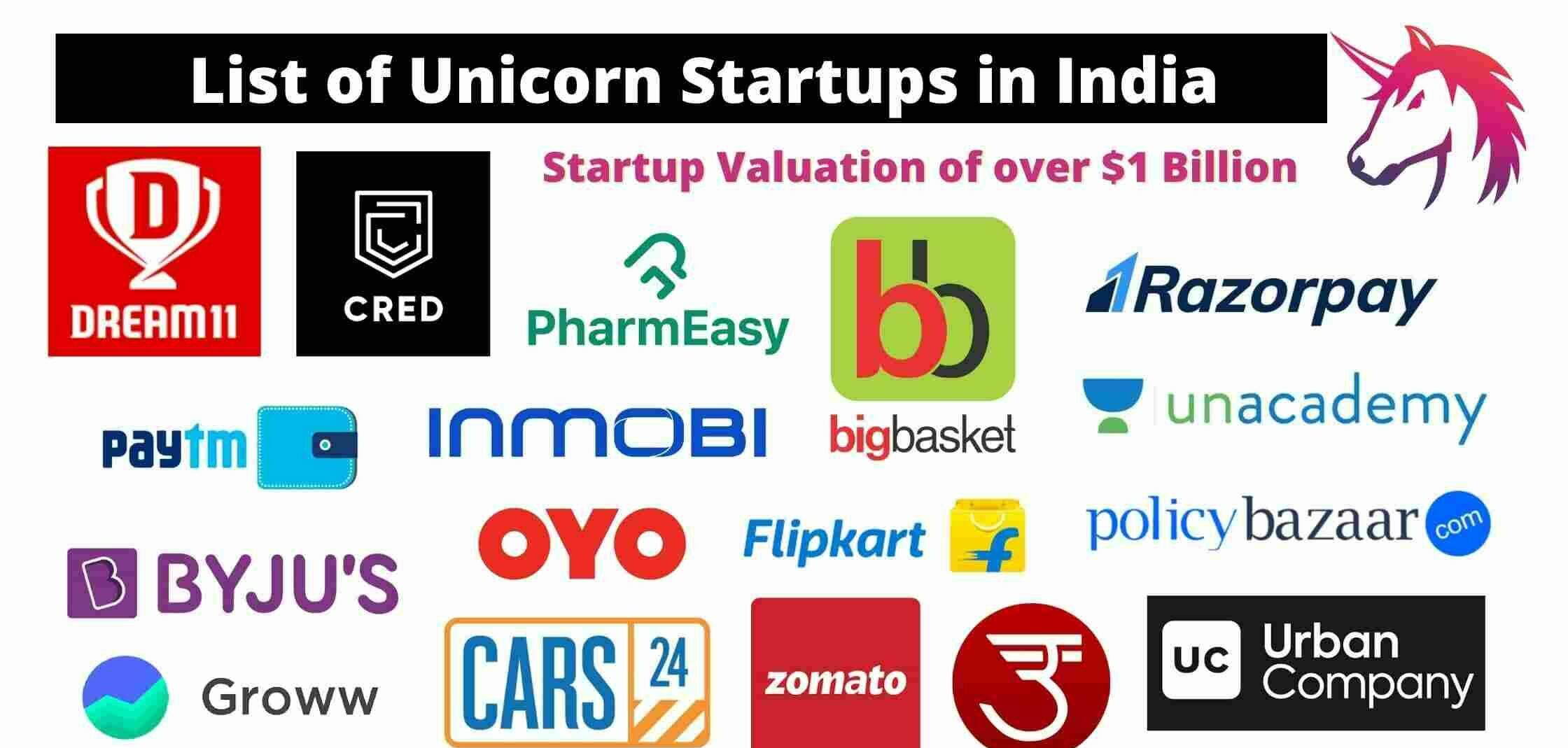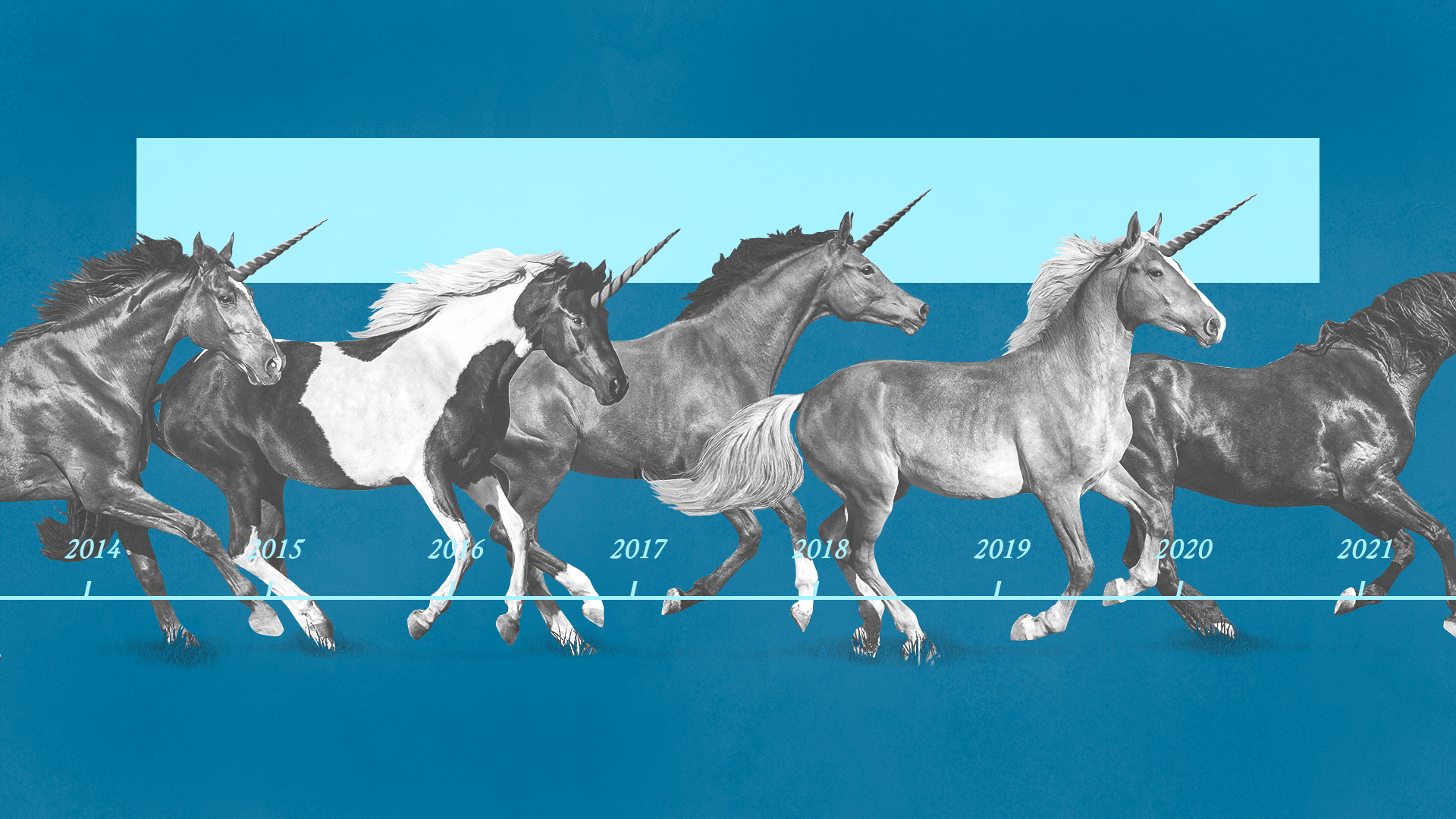
India Is Generating Many Unicorns and Decacorns, But Who Gains From Them?
Start-ups are increasingly being praised as economic growth engines, owing to their ability to generate jobs. However, a closer examination shows that this is not the case.
Our COVID-19-ravaged imaginations and India’s public discourse have been occupied by two prancing, fantastical, horse-like creatures in recent months. This piece isn’t about the winged creature, which has piqued the interest of the land’s highest court, but about dissecting the horse with a horn; no, a horse with a thorn.
As we celebrate India’s emergence as the world’s third-largest start-up ecosystem behind the United States and China, it’s time to reflect on unicorns and their impact on employment growth, capital markets, and society in general.

Start-up Ecosystem in India
As of January 24, 2022, India had become the world’s third-largest start-up ecosystem, with over 62,200 DPIIT-recognized start-ups spread across 636 districts. Among middle-income nations, India ranks second in terms of innovation quality, with top rankings in scientific publications and university quality. India’s innovation is not limited to a few industries.
We found start-ups solving challenges in 56 different sectors, with 13 per cent coming from IT services, 9 per cent from healthcare and life sciences, 7% from education, 5% from professional and commercial services, 5% from agriculture, and 4% from food and drinks.
In the last few years (2015-2021), the Indian start-up ecosystem has grown at an exponential rate:
- 9X increase in the number of investors.
- 7X increase in the total funding of start-ups.
- 7X increase in the number of incubators
In today’s fast-paced and dynamic market, Indian unicorns are thriving. These start-ups are creating large-scale employment and providing breakthrough solutions and technologies. Until 2016-17, about one unicorn was added per year. This number has been steadily rising over the last four years (from FY 2017-18), with a stunning 66 per cent year-on-year increase in the number of new unicorns created each year.
India has 85 unicorns with a total value of $ 287.89 billion as of January 28, 2022. In 2021, 44 unicorns with a total valuation of $ 90.67 billion were born, and four unicorns worth $ 4.72 billion were born in 2022.

Understanding unicorns
A unicorn in the venture capital world is a company valued at $1 billion or more. When Aileen Lee, the founder of Cowboy Ventures, referred to the 39 companies with a valuation of over $1 billion as unicorns, she coined the term. Initially, the term was meant to emphasise the rarity of such businesses. Since then, the definition of a unicorn start-up has stayed unaltered. The number of unicorns, on the other hand, has increased.
Features of a unicorn start-up
Being a unicorn isn’t easy, and each one has a unique storey to tell, along with a list of characteristics that helped it succeed. We’ve compiled a list of common points that can be found on all unicorns:
- Disruptive innovation: Almost all unicorns have disrupted their respective fields. For example, Uber revolutionised the way people commuted. Airbnb impacted the way people booked their vacations, and Snapchat disrupted social media usage, among other things.
- The ‘firsts’: Unicorns are typically considered newcomers to their business. They alter people’s behaviour and gradually establish themselves as a need. They are also considered to innovate to remain ahead of potential competitors.
- High on tech: Another common trend across unicorns is that their business model runs on tech. Uber was able to get acceptance for its business model by creating a user-friendly app. Airbnb made the world feel smaller by harnessing the power of the internet.

Below are some examples of unicorn start-ups in India:
- BharatPe
- upGrad
- coinDCX
- PharmEasy
- Meesho
- Urban Company
- Paytm
- OYO Rooms
- BYJU’S
- OLA Cabs
- Swiggy
- Zomato
- Paytm Mall
- Ola Electric
- Mohalla Tech
- MakeMyTrip
- Nykaa
- Lenskart
- Grofers
And many more.
90 founders among 500 US unicorns were India born: study
90 of the 1,078 founders of 500 US unicorns were born in India, according to a study done by Ilya A. Strebulaev, a finance professor at Stanford University’s Graduate School of Business, indicating the considerable presence of Indian Americans in the country’s start-up and tech ecosystem.
Those from Israel and Canada followed the founders from India.
Strebulaev’s research comes when many Indian-based IT experts are considering returning home. The Information, a Silicon Valley-based tech newspaper, claimed last week that Indian immigrants in the United States were increasingly giving up on their American dream due to visa problems and the allure of India’s flourishing start-up business.
It’s not only start-up founders; India-born executives now lead some of the country’s most powerful tech companies.

What is the reason for India’s unicorn boom?
An Indian start-up founder joked on Twitter about a week ago that the definition of a “Unicorn” in the venture capital market should now be $1 billion in funds raised. The word is now used to describe a start-up with a $1 billion value. He was remarking on the recent flurry of unicorns developed around the world. The term was initially coined by US venture capitalist Aileen Lee in 2013 when just 39 businesses globally fulfilled the description, which has not altered since then.
At one time, reaching the milestone was thought to be impossible. However, as India’s example demonstrates, the term unicorn no longer has the same weight as it once did. India saw the emergence of 42 unicorns in a record-breaking year for start-up funding, up from 11 new unicorns in 2020 and nine the previous year. Unicorns came from various industries, starting with Digit Insurance on January 15 and ending with Pristyn Care on December 8. The 42 enterprises are worth more than $90 billion in total.
Unicorns with the fastest and slowest speeds were also seen this year. Mensa Brands, which purchases Direct-to-Consumer fashion, home, and personal care businesses, has become a unicorn in just six months. After 37 years in business, Chennai-based NBFC Five Star Business Finance was awarded in March. This year, fintech was likely the most significant addition to the unicorn world.
The seven fintech additions were CRED, Groww, Zeta, BharatPe, Mobikwik, Upstox, and Slice. While Byju’s, the edtech industry’s leader, became a decacorn this year with an $18 billion value, three of its competitors, Eruditus, upGrad, and Vedantu, reached the unicorn club this year.
Following China’s rule that all online education enterprises register as non-profits, Indian edtech start-ups have earned greater investor trust. CoinDCX and CoinSwitch Kuber emerged as two crypto unicorns in India despite regulatory uncertainties. With Infra. Market, Moglix, ofBusiness, and Zetwerk becoming unicorns, the B2B commerce industry also underwent a fundraising frenzy. Sequoia Capital, Tiger Global, SoftBank Group, and Accel led the financing activities this year.
It’s been the year of start-up IPOs, just as it’s been the year of unicorns. The IPOs of Zomato, Nykaa, PolicyBazaar, and Paytm boosted the start-up ecosystem by demonstrating that India can provide investors with an exit option. China’s crackdown on internet companies has raised India’s attractiveness as an emerging market option.
According to 3one4 Capital, an early-stage venture capital firm, India will have more than 150 unicorns by 2025. The record fundraising boom is projected to continue in the coming year, thanks to India’s increasing embrace of technology and new start-up products.

Understanding Decacorn
Every start-up aspires to be a unicorn (a company with a market capitalisation of at least $1 billion). But what happens next? Is this the final chapter? Is there another milestone that the start-up must reach to achieve ultimate success?
With the ever-increasing number of unicorns joining the existing group, a new goal had to be established, distinguishing the finest performers from the rest.
This gave rise to the concept of decacorn.
A decacorn is a start-up with more than $10 billion market capitalisation. According to CBInsights, there are 18 decacorns in the world right now, 10 of them hailing from the United States. With a current valuation of $75 billion, Toutiao (Bytedance), a Chinese digital media/AI business, is at the top of the list. Uber comes in second with a $72 billion valuation.
What is the difference between a Unicorn and a Decacorn?
Aileen Lee, the founder of Cowboy Ventures, a seed-stage venture capital firm based in the United States, created the term “unicorn” in 2013. She referred to a start-up business valued at $1 billion or more like a unicorn in a TechCrunch piece entitled Welcome to The Unicorn Club: Learning from Billion-Dollar Start-ups (2013). Decacorn refers to a firm worth more than 10 billion dollars.
The values that lead to start-ups becoming unicorns and decacorns are based on their growth opportunities and predicted development for their potential market, rather than historical performance. Start-up valuations could also come from venture capital firm fundraising rounds. Start-up firm valuations can also be derived from the figures when a much larger company buys them out.
But who benefits from the creation of so many unicorns and decacorns?
Let’s get this straight.
In 2013, Aileen Lee, an American angel investor and founder of Cowboy Ventures, created the term “unicorn,” which refers to a privately held technological start-up with a valuation of $1 billion or more (about Rs 7,500 crore).
There were no unicorns in India at the time.
According to a news article, there were eight unicorns in 2018, nine in 2019, and eleven in 2020. According to news sources, 44 unicorns were born last year, bringing India’s total number of unicorn enterprises to 85. According to Inc42.com, Indian entrepreneurs raised more than $42 billion in 1,583 deals in 2021, surpassing the capital raised in the previous three years combined.
FinTech and e-commerce enterprises took first and second place in deal volume, respectively, followed by SaaS companies (software-as-a-service). From 2018 through the fourth quarter of 2021, the country received $77.8 billion in start-up capital.
The Indian start-up ecosystem is not only expanding, but it is also setting and breaking new milestones.
This and other facts in this column may differ depending on the source. Because there is no official database that tracks the source of funding, the amount of money involved, or the number of such transactions, many start-ups do not disclose the magnitude of their deals.

Valuation and funding journey
Start-ups begin as little more than a concept with no monetary value attached. Investors are recruited based on the attractiveness of the idea, the business plan’s rationality, the promoters’ background, their skills, and their evaluation of the market for the goods or services when these ideas are translated into a business plan with cursory financial forecasts.
Angel investors and venture capital organisations utilise various methods to determine the value of a business before investing, starting with seed funding. Following that, venture capital is raised in “rounds.” Following the seed round, there are Series A, Series B, Series C, pre-IPO series, and IPO series, with valuations growing at each fundraising round, based mostly on opaque algorithms. The founder promoters’ stake eventually decreases with each round. Instead of diluting their stake, promoters can take on debt.
Furthermore, high-growth businesses nearly always need to burn cash to grow before becoming profitable.
Standard financial indicators such as profit after tax (PAT), earnings before interest, taxes, depreciation, amortisation (EBIDTA), and cash flow may not be easily applicable to businesses that consistently lose money. As a result, valuation indicators are used, including annualised gross merchandising value (GMV), cost of products sold, and the number of active and/or paying customers.
The actual sources of revenue for e-commerce enterprises are commissions from sellers and listing fees that they charge producers to list products on their websites.
Why cry foul?
“I do not believe anyone should be concerned about the significant surge in unicorn valuation,” says T.V. Mohandas Pai, an industry veteran and co-founder of Aarin Capital. Investment is a trusting relationship between the investor and the company, with both parties prepared to collaborate.” “If the valuation is not realised,” he continues, “it is between two parties and has nothing to do with public money.”
So far as the promoter and the venture financier are concerned, everything is OK. When this valuation is realised from ordinary investors through an IPO, the question arises. Isn’t it proper to call the appraisal into question at that point? Unicorns are overturning long-held valuation math, putting retail investors on a rudderless boat while enslaving angel and other pre-natal investors on a Royal Caribbean Cruise!
In the imaginations of India’s freshly minted ‘pandemic investors,’ a bouncing stock market, the halo around crypto-assets and NFTs, over-valued unicorns, and hugely oversubscribed IPOs all conspire to create a dream of fast riches. Many, if not the majority, have yet to witness market declines, which are common in stock markets worldwide.
Jobs? What jobs?
According to the ‘NASSCOM Tech Start-up Report 2021 – Year of the Titans,’ Indian start-ups produced 6.6 lakh direct jobs. They enabled 34 lakh indirect jobs in 2021, with e-commerce, mobility, and food delivery platforms helping 70 per cent of those positions.
The National Investment Promotion and Facilitation Agency’s official website states that “start-ups are not only providing novel ideas and technology but are also generating large-scale employment,” but does not provide any figures. “We are on pace to become a digital colony by 2025,” Mohandas Pai said in a recent interview, adding that entrepreneurs have produced 15 lakh employment.
Start-ups are increasingly being praised as economic growth engines, owing to their ability to generate jobs. We often forget that most start-ups fail within the first year, typically with only one employee (the founder). With the talent and financial backing, only a handful can scale up and become unicorns, radically distorting our perceptions. In reality, the vast majority of companies fail to generate employment.
Low-skilled service jobs account for a disproportionate amount of positions. They pay less and produce a less egalitarian society. This category includes jobs created by e-commerce enterprises, food delivery platforms, and logistics organisations.
“Unfortunately, such a large proportion of the workforce has no proper wages, has abysmal working conditions (remember when the pizza delivery person pleaded with you not to complain about delayed delivery, saying the discount given by the company would be recovered from his salary? ), no representation of any kind, is forced to sign opaque and unintelligible contracts, and, of course, has no say in the management,” says noted investment banker P.N. Vijay.
Societal concerns
How many of the expanding unicorns have ventured into the manufacturing industry, armed with cutting-edge technology? Smartphone accessories, e-waste recycling, furniture manufacturing, auto-components, leather goods manufacturing, 3-D printing, robot and drone manufacturing are all areas that have yet to be explored. The pandemic has resulted in a massive amount of plastic garbage.
This is in addition to the packaging materials wasted daily by e-commerce platform users. Can we afford to ignore the facts and manufacture froth in the name of establishing a digital economy?
Start-ups in the manufacturing sector answer if India wants to become a global manufacturer. However, MSMEs must get 40 or more permits and pay fees at each level of the process before laying the groundwork for their company. Once it is up and running, they must frequently deal with harassment from unethical service providers.
Edited and published by Ashlyn Joy




